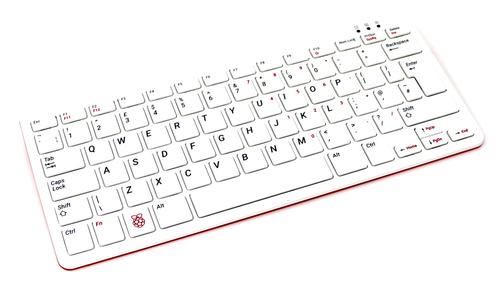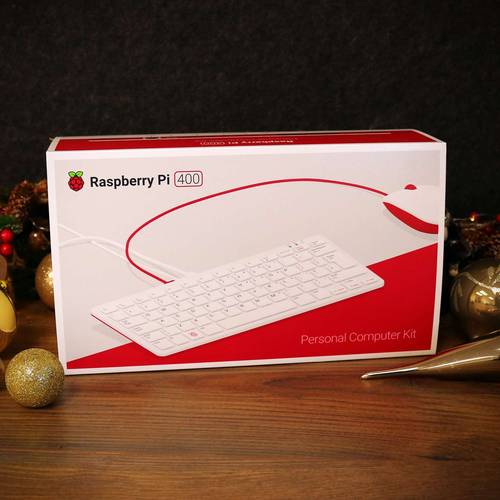 On Monday, I received the announcement about the new Raspberry Pi 400 via the Pi Hut.
On Monday, I received the announcement about the new Raspberry Pi 400 via the Pi Hut.
The Pi 400 is essentially a Raspberry Pi 4 built into a keyboard. Wonderful concept that very much takes me back to my first personal computer.
Of course, in the spirit of all things Raspberry, the complete kit price is pretty reasonable at about $100 US. Here are details via Pi Hut:
The Pi400 has all of the great features of a Raspberry Pi 4 wrapped in a convenient and compact keyboard – it’s the ultimate coding machine!
The keyboard is available as a kit with everything you need in one box (minus a monitor), or on its own.
The Pi400 doesn’t compromise on performance either – in fact, the CPU is clocked to a whopping 1.8GHz which is made possible thanks to the large metal heatsink inside the keyboard.
CPU aside, the Pi400 boasts the same great specs and connectivity as a Raspberry Pi 4 – 4GB RAM, dual-band wireless networking, Gigabit Ethernet, dual-display output and 4K video playback.
USB, power, video, Ethernet and SD ports are located at the rear of the keyboard, including the familiar 40-pin GPIO connector.
The Raspberry Pi 400 is also available in a number of different regional variants (some international variants coming soon!).
Many thanks to SWLing Post contributor, Richard Langley, who shares the following Pi 400 review from Tom’s Hardware:
The Raspberry Pi Model B has seen the same board layout since the Raspberry Pi B+ arrived in 2014. Sure the Raspberry Pi 4 swapped the Ethernet and USB ports around, but the same basic design has persisted. So when we received a parcel from Raspberry Pi Trading and opened the box to find a keyboard, we were somewhat puzzled as to the contents. Inside this compact and well designed keyboard is a Raspberry Pi 400, a variant of the Raspberry Pi 4 4GB designed specifically for this purpose.
Retailing as a single unit for $70 or as a complete $100 kit with mouse, power supply, cables, micro SD card and a copy of the Raspberry Pi Beginner’s Guide, the Raspberry Pi 400 could be the ideal way to introduce the Raspberry Pi to your home.
[…]Despite the change in form factor, this is still a Raspberry Pi 4 4GB and, as such, it behaves in exactly the same manner, with one exception. The Raspberry Pi 400 lacks the CSI and DSI connectors, used for the Camera and Official Touchscreen. Without these connectors there is no way to use those devices. This loss of the touchscreen connector is not such a big deal, but the camera connector is.
The range of Raspberry Pi cameras are cheap and effective add-ons (see our list of best Raspberry Pi accessories) that provide a fun stream of projects. If you want to create camera projects, then the Raspberry Pi 400 is not for you.[…]
Click here to read the full review.
I normally scoop up new Raspberry Pi products as soon as they’re released, but I’m flush with RPi’s at the moment! I do believe, however, I’ll eventually replace out my daughters’ Pi 4s with these all-in-ones.


“Other key differences are that the Raspberry Pi 400 only offers HDMI for audio output where as the Pi 4 SBC also has a 3.5mm audio and video jack. There’s also one fewer USB 2.0 port on the Raspberry Pi 400.
The Raspberry Pi 400 does feature a horizontal 40-pin GPIO header on the rear of the keyboard, so it’s possible to add physical HAT extensions, such as a camera. There’s also a built-in heatsink in the Raspberry Pi 400 that’s not included with the SBC, [ single board computer ]